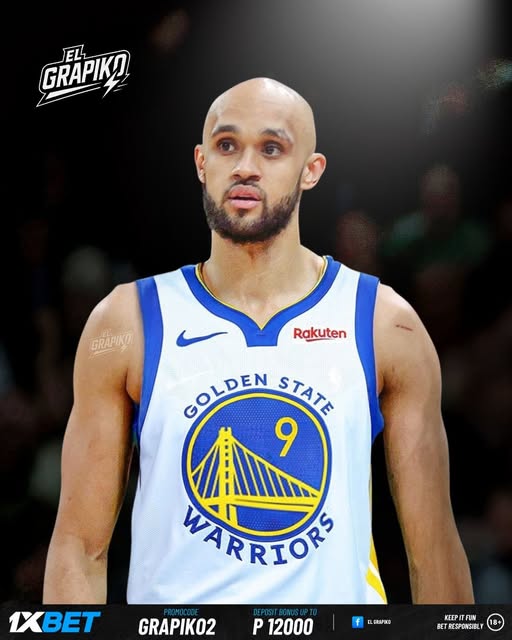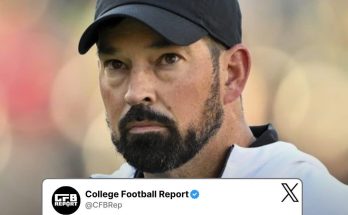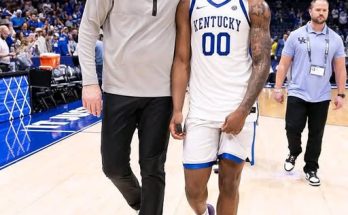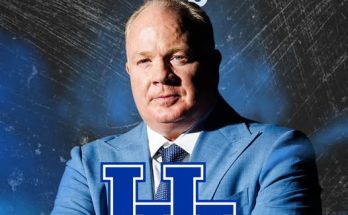The NBA offseason continues to deliver shockwaves across the league, and perhaps one of the most unexpected storylines is unfolding in the Bay Area and Boston simultaneously. In a surprising and significant move, the Boston Celtics have agreed to trade guard Derrick White to the Golden State Warriors. This trade not only alters the trajectory of both franchises heading into the 2025-2026 NBA season but also serves as a key marker in how teams are navigating a rapidly changing league climate defined by new CBA restrictions, aging superstars, and a desperate hunger for championships.
The decision to trade Derrick White comes as a shock to many Celtics fans and NBA analysts alike. White has been a pivotal piece for the Celtics, especially in their championship run and recent playoff success. His role as a two-way guard, capable of defending the perimeter, initiating the offense, and spacing the floor, made him one of the most valuable secondary guards in the Eastern Conference. His departure is not just a personnel loss—it is a philosophical pivot. For the Celtics, this trade signifies a shift in direction and possibly a restructuring of roles within a team that had been considered one of the deepest and most complete rosters in the league.
From Boston’s perspective, this trade may have been motivated by several overlapping factors. First, the Celtics’ cap situation has become increasingly restrictive. With Jayson Tatum and Jaylen Brown both on supermax contracts, the team is facing the second apron of the luxury tax—an area that severely limits roster flexibility, especially under the new collective bargaining agreement. Moving Derrick White and his contract provides the Celtics with more breathing room to remain under the tax threshold and allows them to retool in other areas.
But beyond the financial implications, the trade suggests Boston is making a bet on internal development. Players like Payton Pritchard, Sam Hauser, and potentially even rookie guards waiting in the wings could now receive expanded roles. There’s also the looming question of Malcolm Brogdon’s future, as he was once considered the odd man out before Derrick White emerged as a full-time starter. With White gone, the Celtics may now view Brogdon and Pritchard as a balanced duo capable of holding the backcourt responsibilities next to Jrue Holiday, assuming the veteran returns or signs an extension.
Derrick White’s fit in Golden State, however, is a narrative that immediately grabs attention. The Warriors have long been searching for the right backcourt complement to Stephen Curry. Since the decline and eventual departure of Jordan Poole and the aging of Klay Thompson, Golden State has been forced to recalibrate their guard rotation, especially on the defensive end. White steps in as an ideal candidate to fill that gap. Known for his elite perimeter defense, shot-blocking ability from the guard position, and unselfish playstyle, White meshes almost perfectly with Steve Kerr’s ball-movement-heavy system.
Golden State’s identity has been defined by unselfishness, motion offense, and defensive intelligence. Derrick White is a player who doesn’t need the ball to be effective, which is crucial when playing alongside high-usage stars like Stephen Curry and Draymond Green. More importantly, his ability to guard the opposing team’s best perimeter player relieves pressure from Curry, something the Warriors have prioritized since their first championship run in 2015.
In many ways, this move signals that the Warriors are not ready to enter a rebuild. With their aging core and the looming question of Stephen Curry’s remaining prime years, this trade seems to reaffirm the front office’s belief that another title run is not only possible, but within reach. The addition of White brings more defensive versatility and championship experience to a team that values both qualities immensely.
For Derrick White personally, the transition from Boston to Golden State represents both a challenge and an opportunity. In Boston, White had carved out a defined role. He was a starter, a leader, and a player who earned the respect of his teammates, coaches, and fans. Moving to a new team, especially one with as much media attention and internal competition as Golden State, will require adjustment. However, White’s personality and playing style suggest that he will embrace the challenge. Known for his quiet leadership and team-first mentality, White’s arrival could stabilize the Warriors’ backcourt and reinvigorate a squad that struggled with consistency last season.
There’s also an emotional element to consider for Celtics fans. White’s departure is not just a subtraction on the court, but a loss of someone who embodied the team’s gritty, resilient identity. From game-saving blocks to timely three-pointers and calm under pressure, Derrick White left his mark in Boston in a relatively short period of time. His impact extended beyond the stat sheet—he was a glue guy, a competitor, and someone who elevated the play of those around him.
As for Golden State, integrating White into the system will require some changes. The Warriors are known for having a steep learning curve when it comes to mastering their complex offensive schemes. It often takes new players at least a season to fully grasp the nuances of Kerr’s playbook. But White’s basketball IQ, defensive fundamentals, and experience in structured systems like those in Boston and San Antonio bode well for a smoother transition.
With the addition of White, the Warriors now have several lineup configurations that become significantly more potent. A closing lineup of Curry, White, Andrew Wiggins, Draymond Green, and Jonathan Kuminga offers a blend of shooting, defense, and experience that can match up well against the league’s elite. If Klay Thompson re-signs on a team-friendly deal or returns in a bench role, Golden State could potentially be deeper than they have been in recent seasons.
In the long-term scope, this trade has broader implications for both franchises and possibly the league as a whole. For Boston, it signals a willingness to pivot around its stars and make tough decisions for the sake of sustainability. The Celtics have been building toward a championship window for years, and although they captured the title in 2024, they know the window can close quickly. This move may allow them to recalibrate for another run while maintaining flexibility.
For Golden State, the trade signals that the front office still believes in the core of Stephen Curry, Draymond Green, and now, a new supporting cast. It is also a reminder that the Warriors are trying to thread the needle between competing now and preparing for a future that no longer includes their generational trio. Adding a player like Derrick White, who is in his prime and under contract, bridges the gap between the old and new era in San Francisco.
Financially, the deal also shows how teams are strategizing under the new collective bargaining agreement. With second-apron penalties looming and increased consequences for teams with bloated payrolls, franchises are being forced to make smarter, leaner moves. Acquiring a player like White, who offers premium value at his salary tier, is a savvy decision in this economic landscape.
There’s still much to uncover about the full details of the trade—what Boston receives in return, how many picks are involved, and whether other players are moving as part of the deal. But what’s clear now is that both teams are entering a new phase. For the Celtics, it’s about recalibration. For the Warriors, it’s about survival and one more shot at glory.
One of the most fascinating elements of this trade is how it aligns with broader league trends. In an era increasingly defined by positionless basketball and defensive versatility, Derrick White represents the prototype of the modern guard. He can handle the ball, stretch the floor, guard multiple positions, and doesn’t demand touches to influence the game. Players like White are increasingly becoming the hidden engines of winning basketball.
The timing of the trade also adds layers of complexity. Coming just after the draft and during the free agency window, this move could have ripple effects on how other teams approach their offseason plans. If Boston, a top contender, is willing to part with a foundational player for cap relief or assets, it might embolden other franchises to explore similar recalibrations. Teams hovering on the fringe of contention may now view the trade market as a more viable path than overpaying in free agency.
Furthermore, the trade opens the door for young players in both organizations. In Boston, the exit of White could accelerate the development of young guards and shift more responsibility to Jayson Tatum and Jaylen Brown as playmakers. In Golden State, White’s presence could alleviate pressure on Moses Moody and Brandin Podziemski, allowing them to develop without being thrown into high-pressure situations.
The trade also adds a compelling subplot to the 2025-26 season. With White now on the Warriors, any potential Celtics-Warriors matchup will carry added intrigue. Fans will undoubtedly circle those games on the calendar, and it would be poetic—perhaps even inevitable—if these two storied franchises met again in the playoffs, this time with White on the opposite bench.
This trade reminds fans and analysts alike that the NBA is a constantly evolving ecosystem. Players move, strategies shift, and front offices must walk a tightrope between loyalty and logic. The trade of Derrick White from Boston to Golden State is more than a transaction—it’s a reflection of the choices that define franchises, the evolution of basketball philosophy, and the never-ending pursuit of excellence.
Ultimately, only time will determine the success of this deal. If White helps push Golden State deep into the playoffs and Boston is able to reshape their roster effectively, it may go down as a win-win. But the stakes are undeniably high. For now, fans can only speculate, analyze, and anticipate the upcoming season with renewed excitement.
In the end, the beauty of the NBA lies in its unpredictability. Trades like these are not just headlines—they are the threads that weave the larger narrative of competition, legacy, and the relentless chase for greatness. And in that story, Derrick White’s next chapter just got a lot more interesting.



